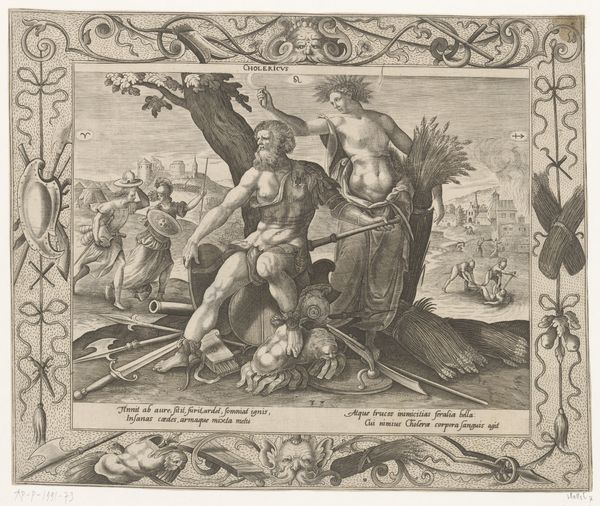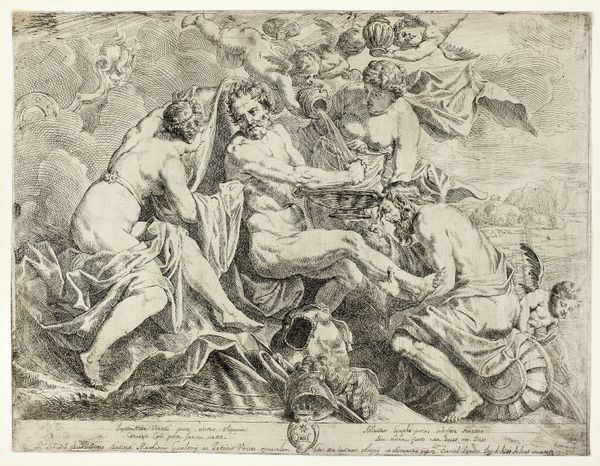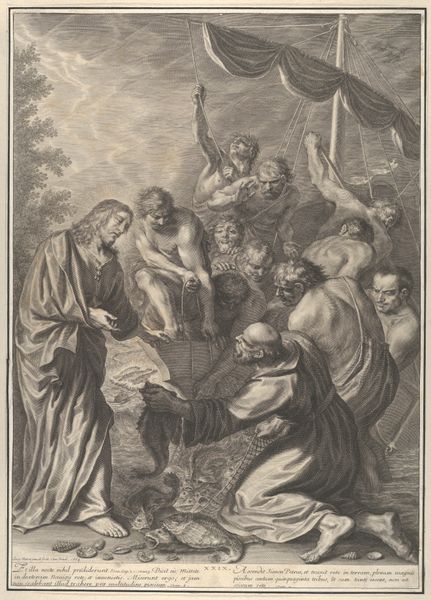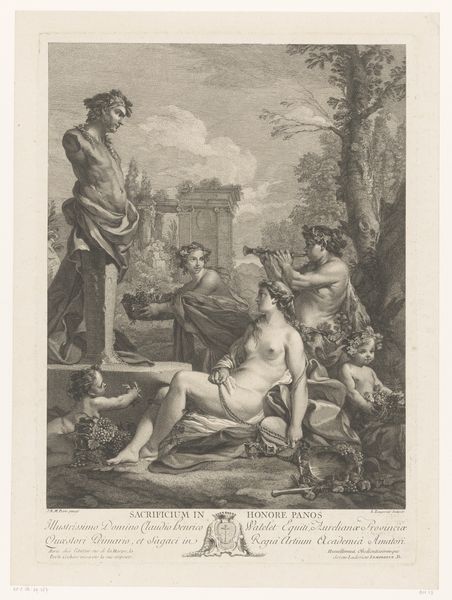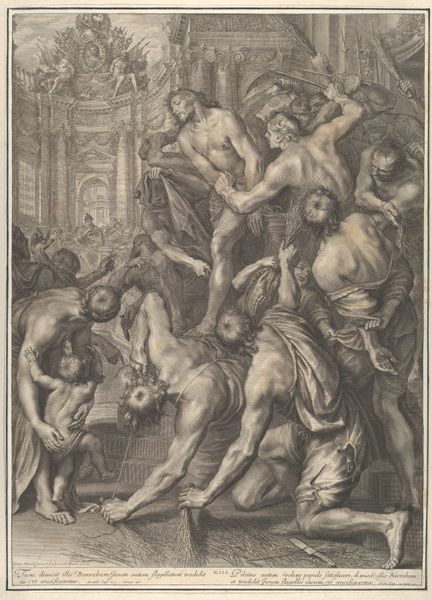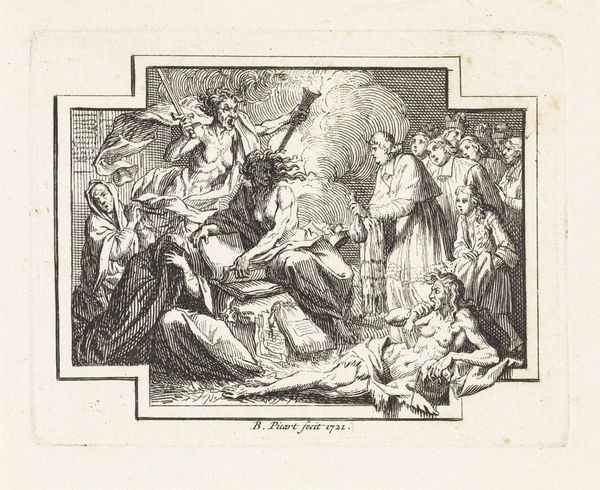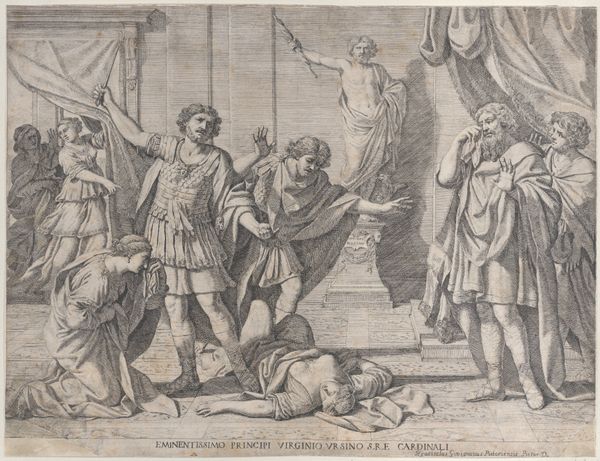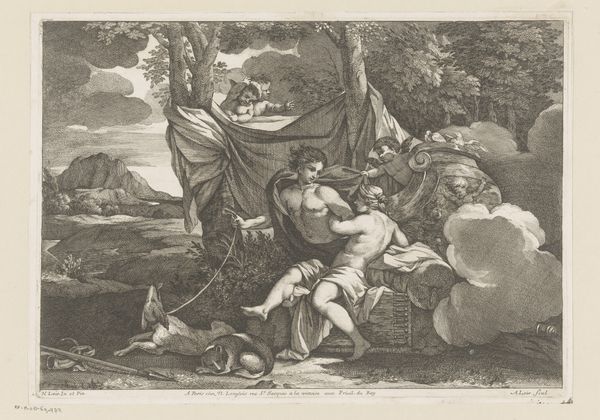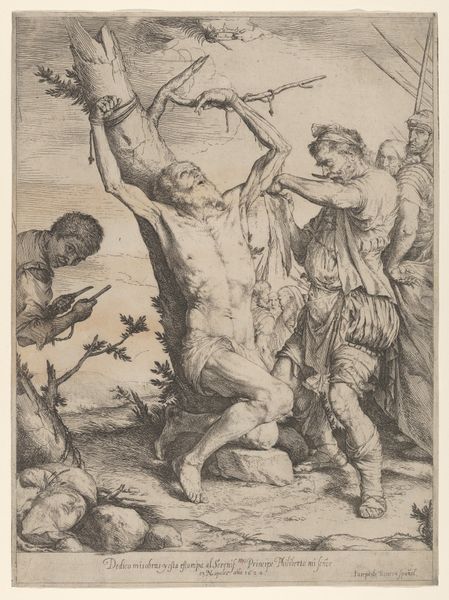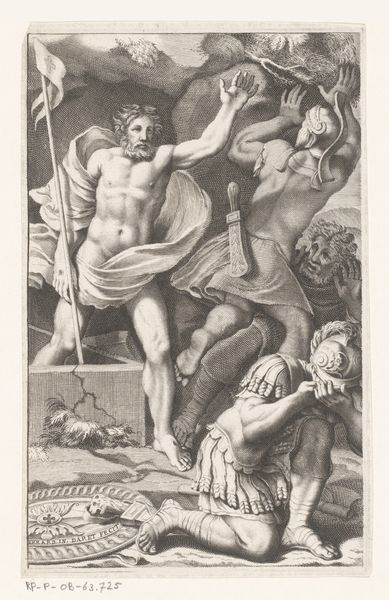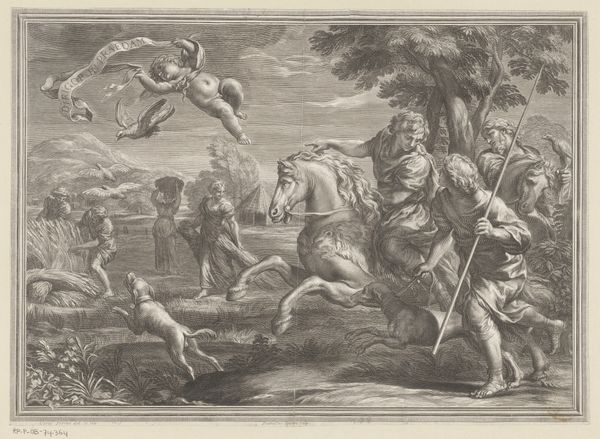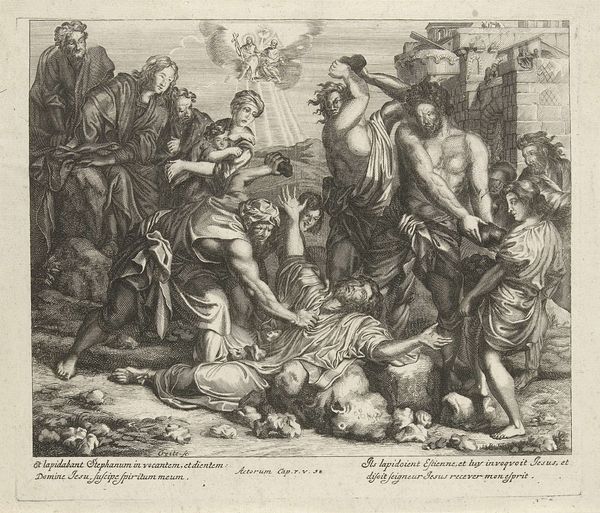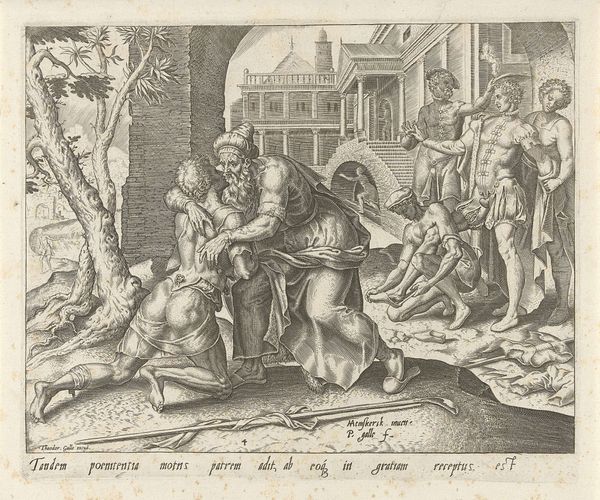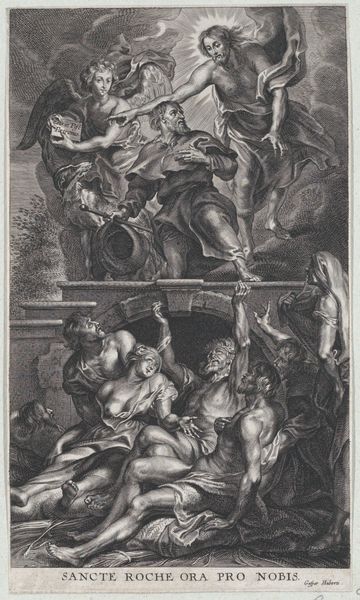
print, engraving
#
allegory
#
baroque
# print
#
old engraving style
#
figuration
#
line
#
history-painting
#
engraving
Dimensions: height 388 mm, width 390 mm
Copyright: Rijks Museum: Open Domain
This print, made by Lorenzo Zucchi in the eighteenth century, depicts the flaying of Marsyas by Apollo, rendered in fine lines on paper. The image doesn't shy away from the gruesome details of the story. But it's not only the depicted subject, derived from classical mythology, that gives us insight into the modes of production. Engraving, the printmaking process used by Zucchi, was a highly skilled technique which demanded meticulous labor and a deep understanding of materials. The engraver uses tools to carve an image into a metal plate, which is then inked and pressed onto paper. The resulting lines and textures, seen here in the figures' musculature and expressive faces, required great technical skill and precision. Prints like these were luxury items, carefully crafted objects representing countless hours of labor. The artist would have needed advanced knowledge of the properties of metal, ink, and paper, and a keen understanding of line and tone. By attending to the material processes, we can appreciate the social and cultural significance of this kind of artwork, resisting any easy division between fine art and craft.
Comments
No comments
Be the first to comment and join the conversation on the ultimate creative platform.
